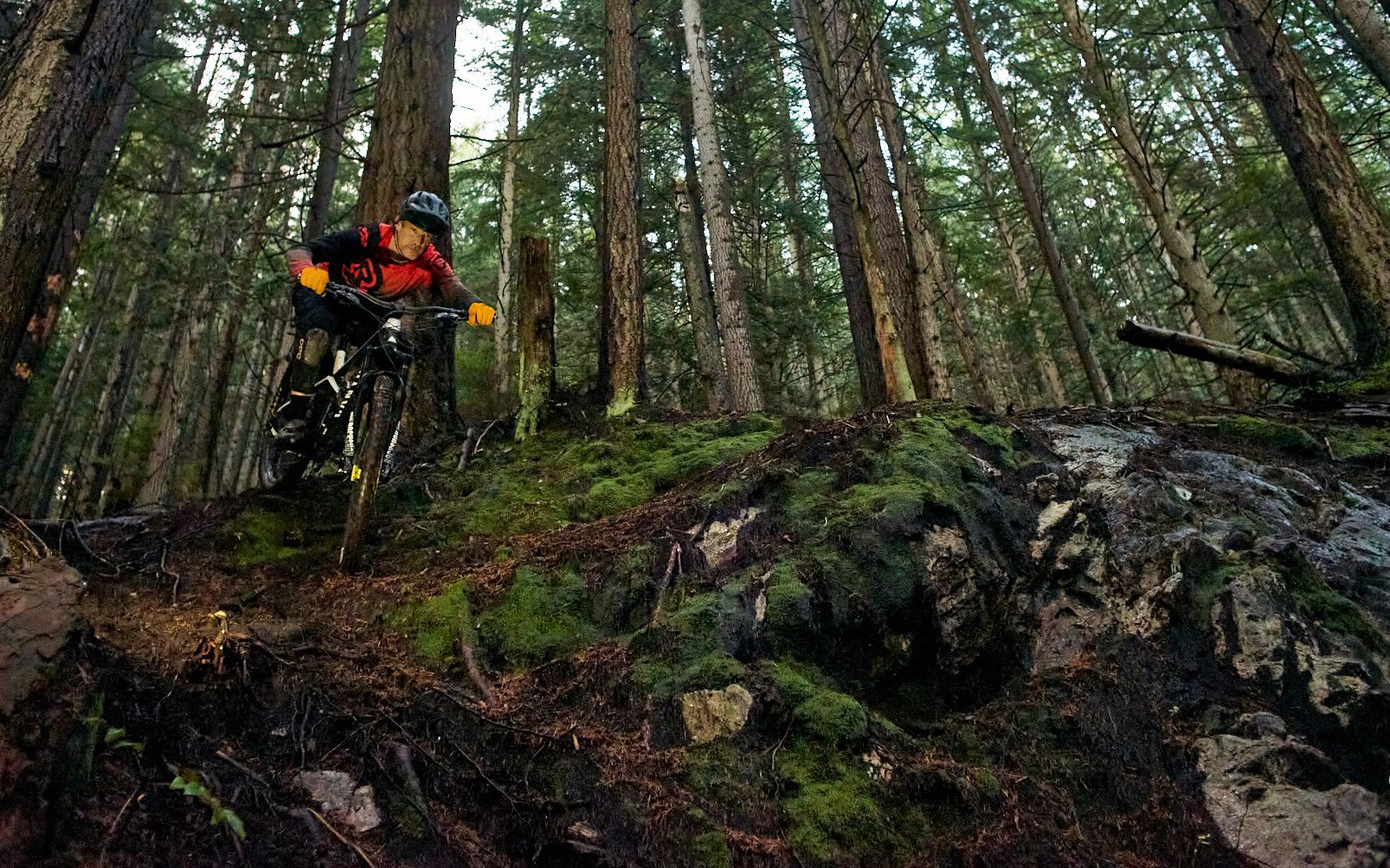
Long Term Test
2019 Canyon Strive CFR 9.0 Team 29 Reviewed
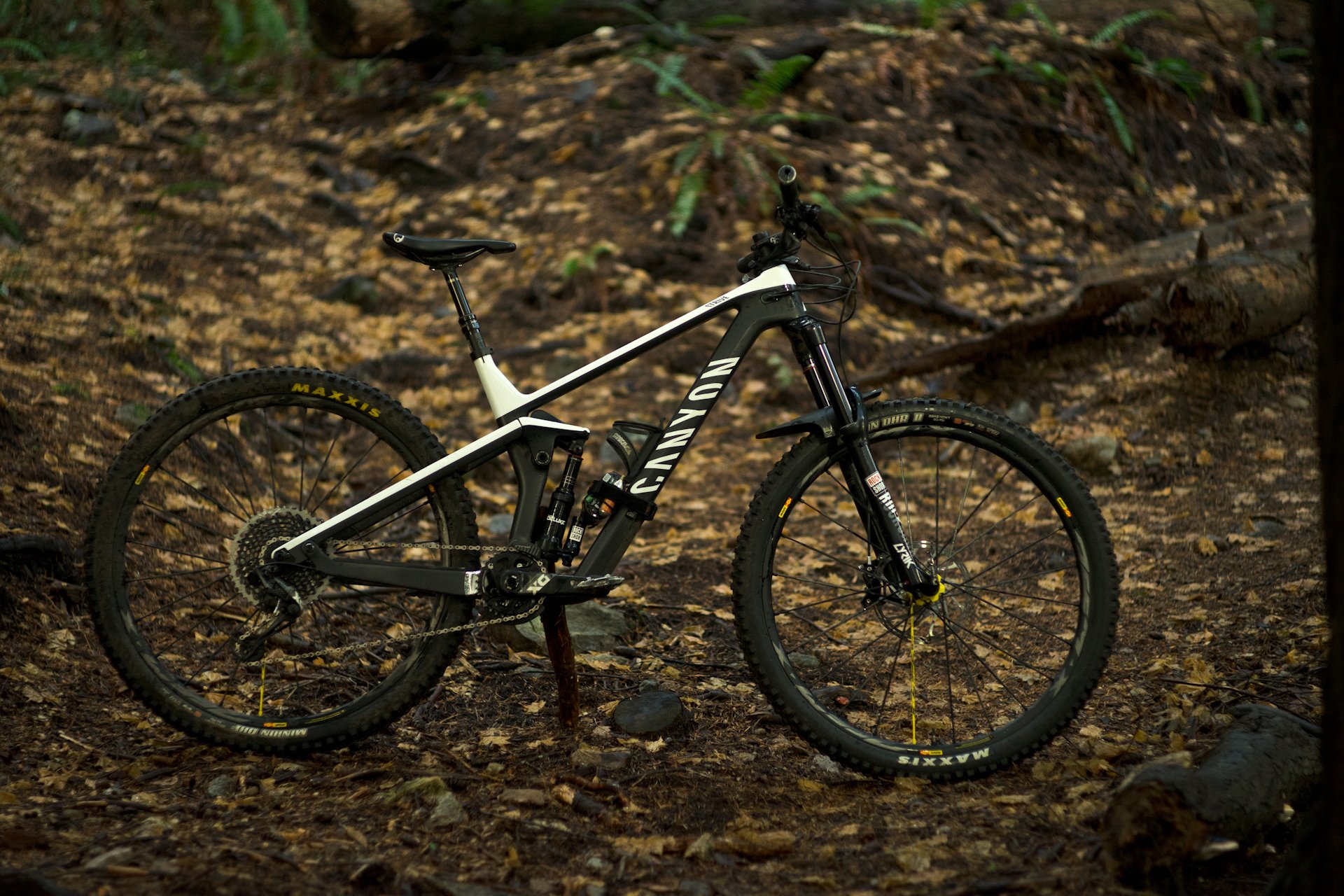
Canyon packs excellent value into every model.
I have been doing my best to give this bike a good work over since July. That has mainly meant a lot of summer rides in Whistler both in and out of the park and a trip up to the Panorama bike park. For the fall and winter season that has meant a lot of days on Cypress, Fromme and Seymour in North Vancouver. The riding here recently has included a lot of wet, rough rides that are not particularly nice to a bike.
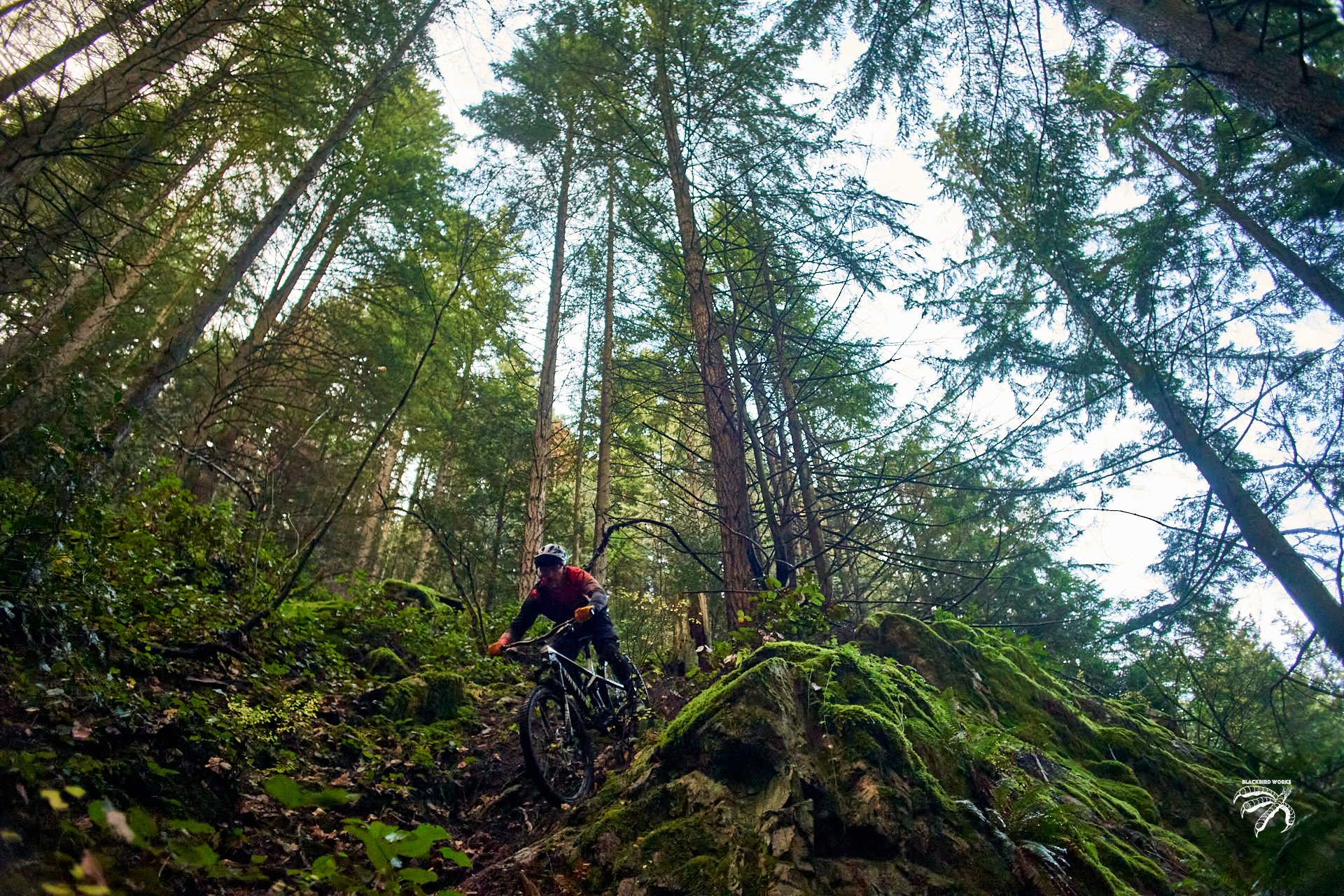
The Strive thrives in the steeps.
The CFR 9.0 is a high end carbon Enduro bike. 170mm of front travel and 150mm of rear travel. CFR stands for Canyon Factory Racing to help drive home the point. The CFR 9.0 Team is the closest you can get to riding Florian Nicolai’s bike on which he placed second to Sam Hill for the 2019 EWS overall. Canyon also placed first in the overall team rankings.
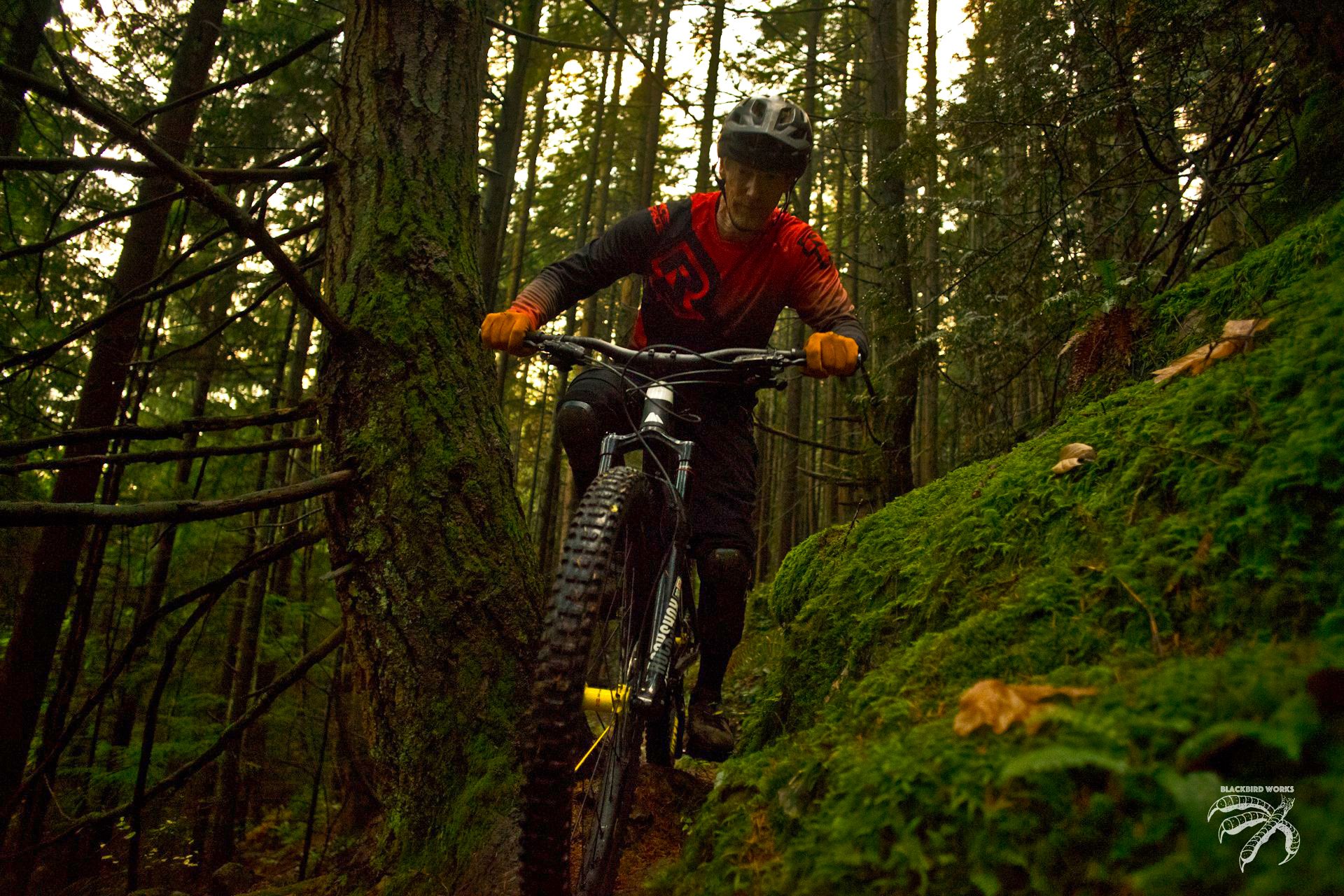
A quick scan of this parts list and Canyon’s serious approach to building a top level Enduro bike is clear:
- 170mm RockShox Lyrik RC2 fork
- RockShox Super Deluxe RCT shock
- SRAM XO1 Eagle drivetrain
- SRAM Code RSC brakes
- RockShox Reverb dropper seatpost
- Mavic Deemax Pro wheelset
- Maxxis DHR II tires 29×2.5
- Claimed weight: 30.9 pounds
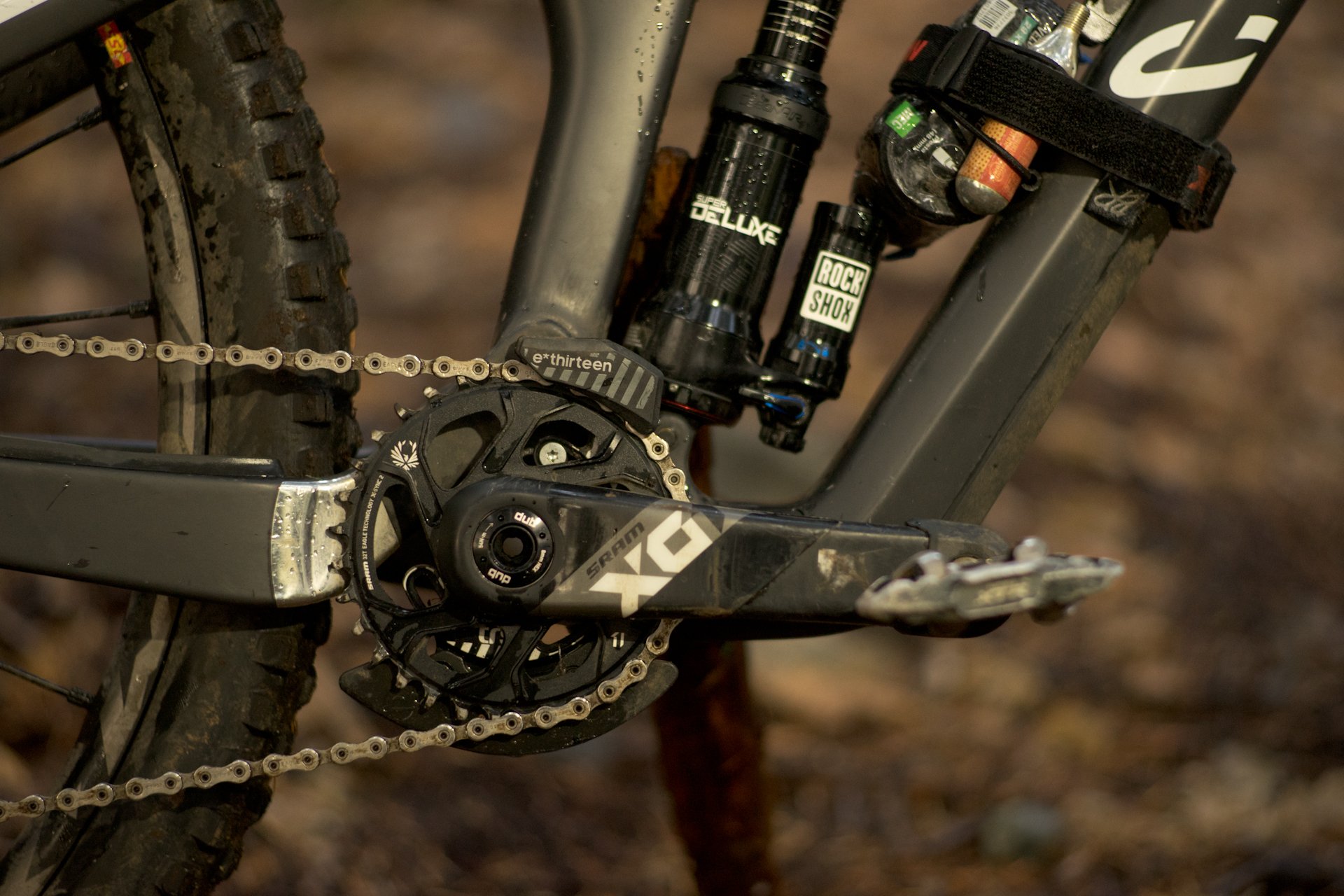
SRAM is well represented here.
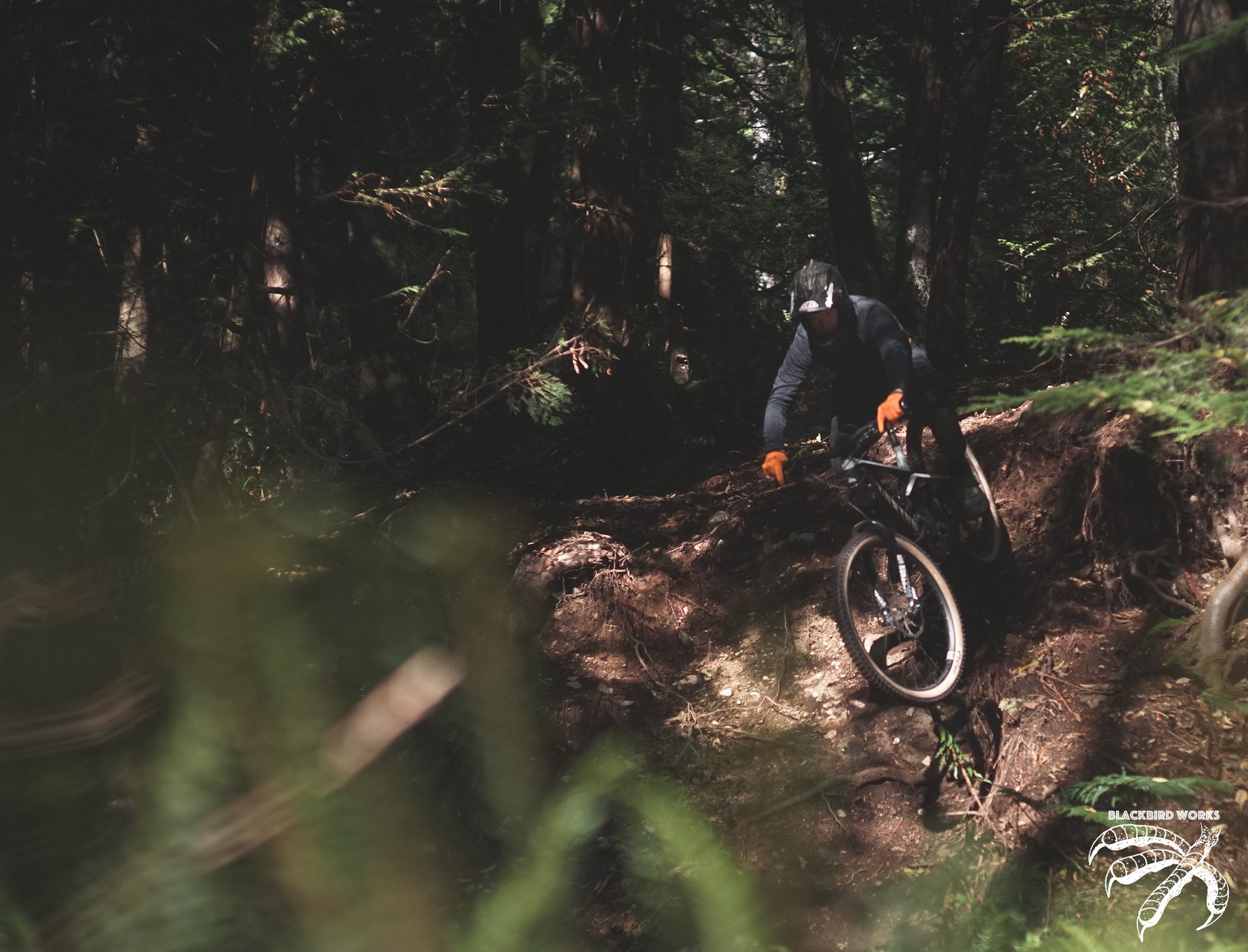
Dropping in doing some testing on Cypress.
The Goods:
A lot of what is written about this top-level Enduro machine has been about the second generation ShapeShifter that is very nicely placed and covered up at the top of the rear shock. The ShapeShifter is a small piston that at the press of a lever adjusts the bike's geometry. There are two nicely designed levers on the handlebar next to the seatpost lever that engage and disengage an air piston. When the ‘uphill’ lever is depressed the air piston is extended and the head angle steepens from 65.5 deg to 67 deg and the seat angle increases from 73.5 deg to 75 deg. To return to downhill mode you press the second lever and give the seat a couple of heavy bounces to compress the air piston. You set the air pressure in the piston with your shock pump just like you would do a fork or rear shock.
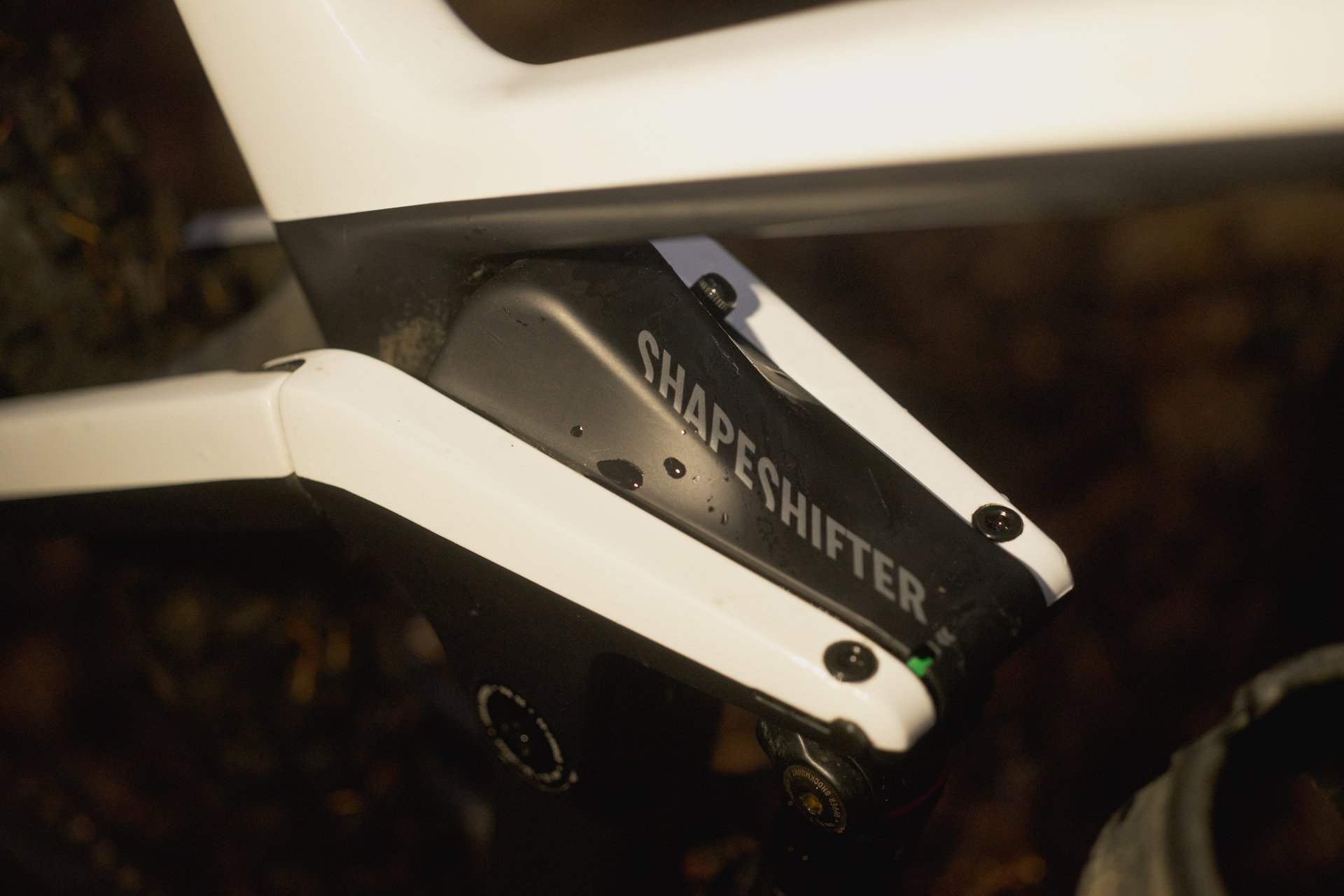
The Shapeshifter with cover in place.
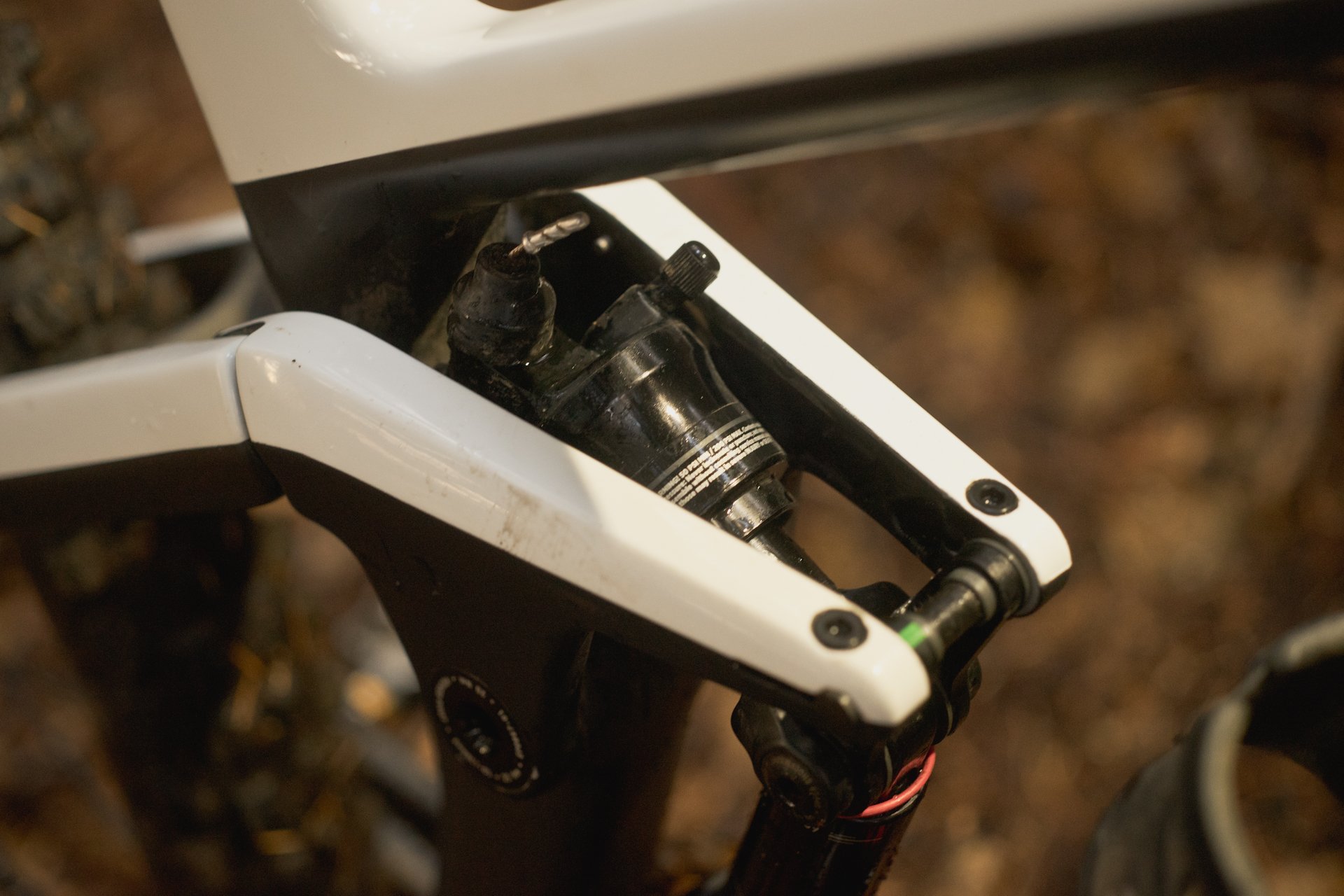
Cover removed (for photo) and Shapeshifter extended for climbing.
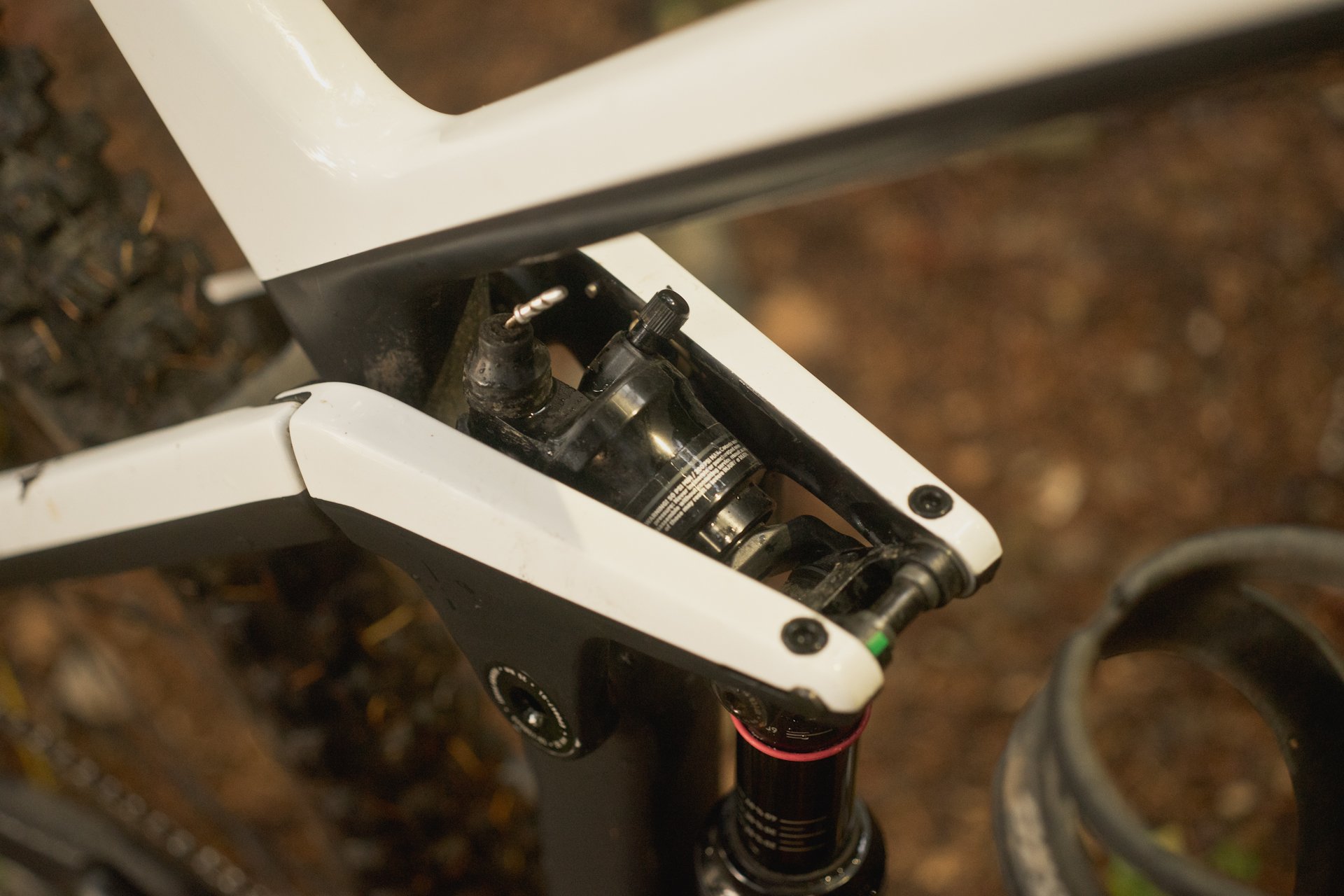
Shapeshifter compressed for descending.
The geometry on the Strive (in downhill mode that is) is leaning towards the conservative side for modern 29”-wheeled Enduro-focused machines with reach on the size Large at 464 mm. The BB height was a bit of an exception at a corner busting low 336mm. The die hard pedal mashers out there will notice that even in the steeper mode the seat tube angle is a little behind the times.

On the chart are a few of the comparable bikes found in the hills of North Vancouver. All size L and all measurements in mm.
Almost the entire spec on this bike is consists of well-chosen, proven components. The 170mm RockShox Lyrik RC2 fork, RockShox Super Deluxe RCT shock, Sram X01 Eagle drivetrain, Sram Code RSC brakes and RockShox Reverb seatpost are all very hard to criticize. The obvious departure from the norm is the Mavic Deemax Pro aluminum wheelset which is difficult to locate even on the Mavic website. Weight is 1895g with 28mm internal width (although Canyon website says the rear is 25mm internal). 28mm is a good width for a bike that is meant to be ridden more like a DH bike than a trail bike. When I first thought the rims were 25mm internal I was all excited that I would get to pull out my stat. that Finn Illes and Loci Bruni are still slaying the world on 25mm internal rims. The only worrisome bits noticeable right out of the gate however were the Exo casing Minion DHR II tires front and rear. DHR II tires front and rear are typically an amazing combo (again, just look at World Cup DH) but EXO casings?
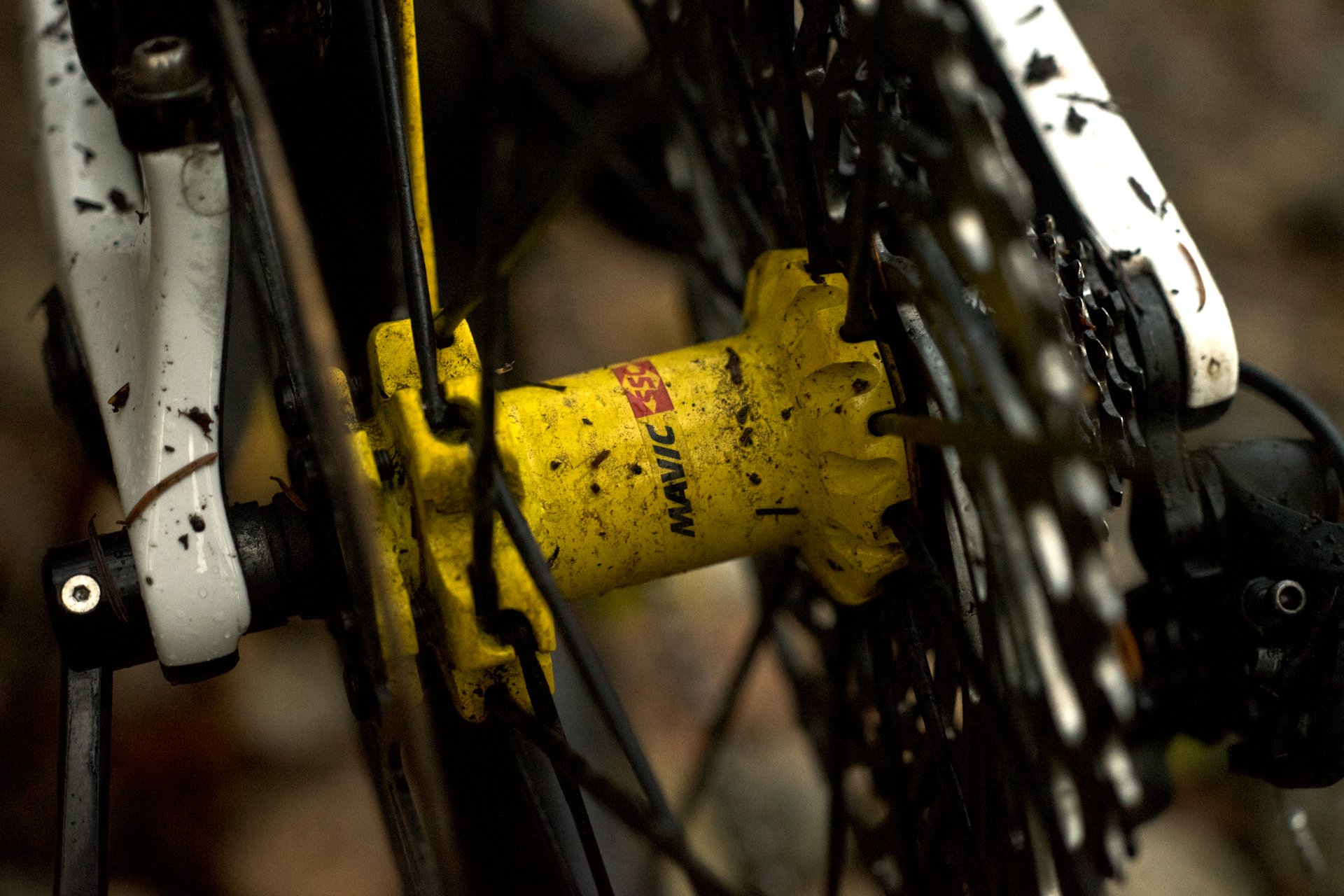
The Mavic wheels held up very well.
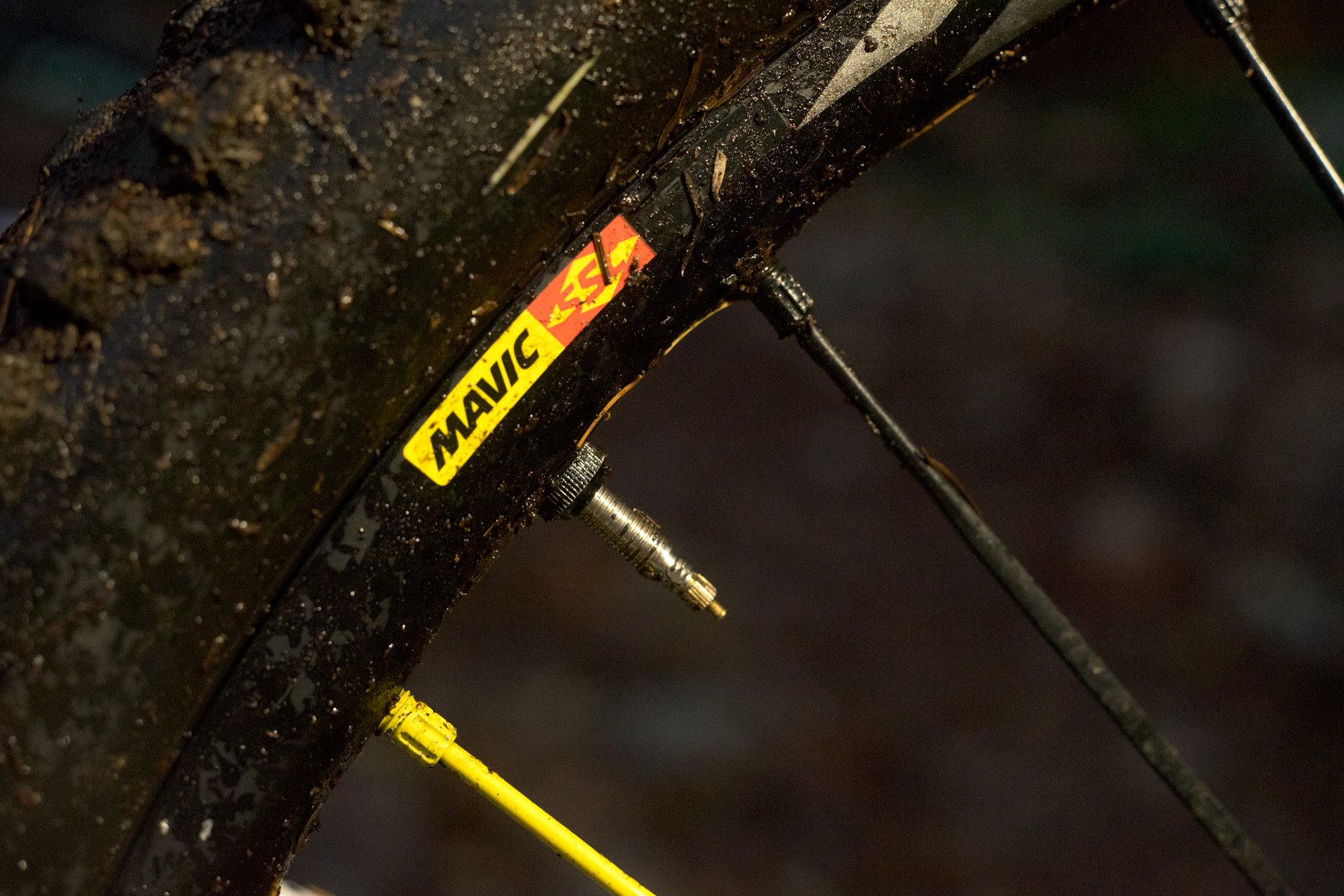
Until a couple of spokes failed and replacements became a challenge.
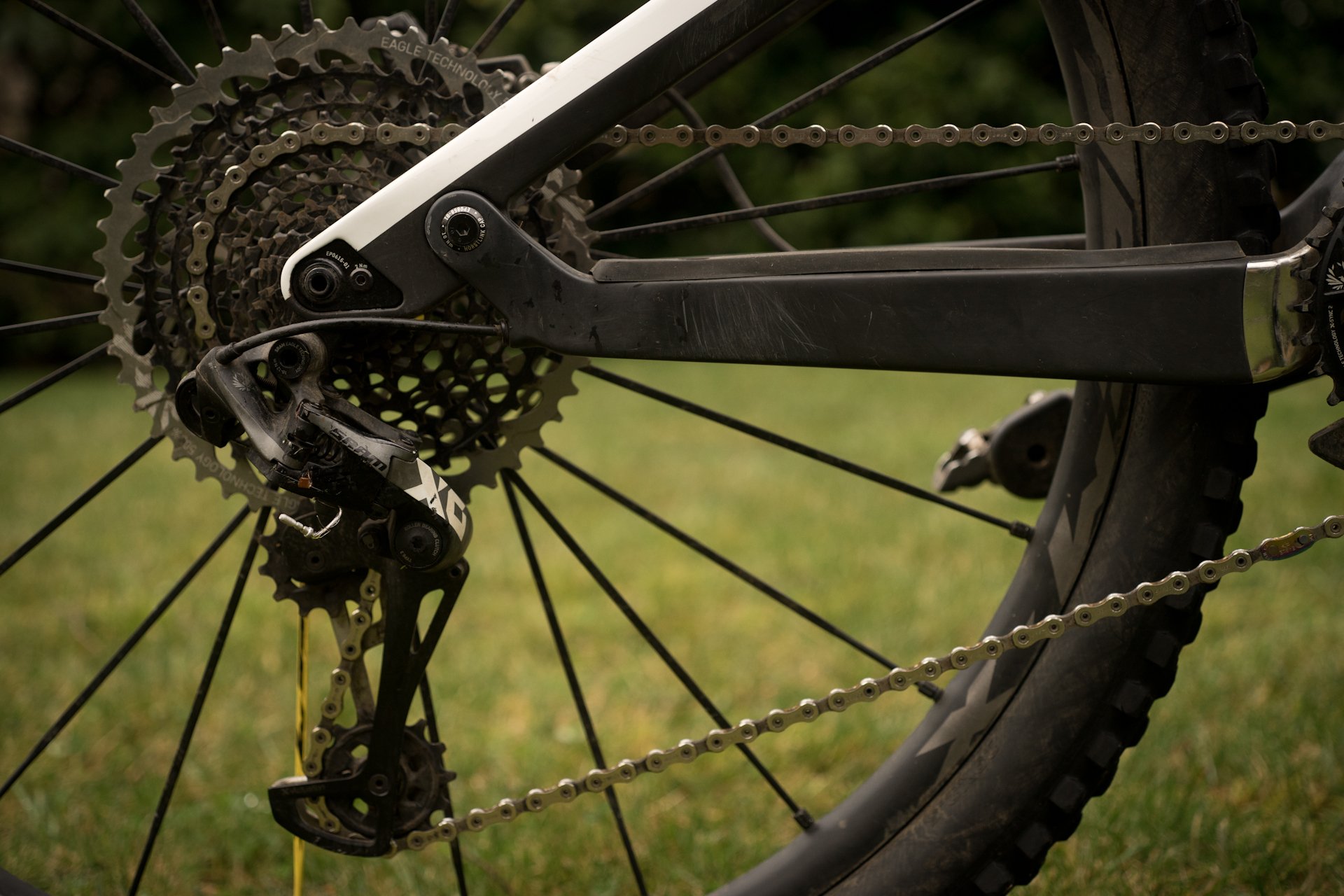
The EXO casing on the Mavic DHR II rear tire? Not so much.
Setting up the Goods:
As with anything new and different I was keen to get the Shapeshifter up and running. And of course I didn’t want to read any instructions to do it. The well designed little cover says 50-200 psi right on it. I put in 150 psi with a shock pump and nothing happened no matter how many times I pushed the bar mounted levers. It turns out that to get it the piston to extend you need the full 200 psi. Once I did that and pushed the climb lever the piston opened up nice and fast. To get the piston to close (climb mode) you need to press the lever and give a fairly significant couple of bounces on the pedals. There are little markings on the linkage that show if the piston is open or closed. In downhill mode the marking shows green and in climb mode it should show black. It did bother me a little that the marking would never show full black in climb mode but would always be half black and half green.
For suspension set up I started at 145 psi in the rear (25 -27% sag) and 96 psi (with 7 clicks of compression) in the front. I weigh 175 lbs.
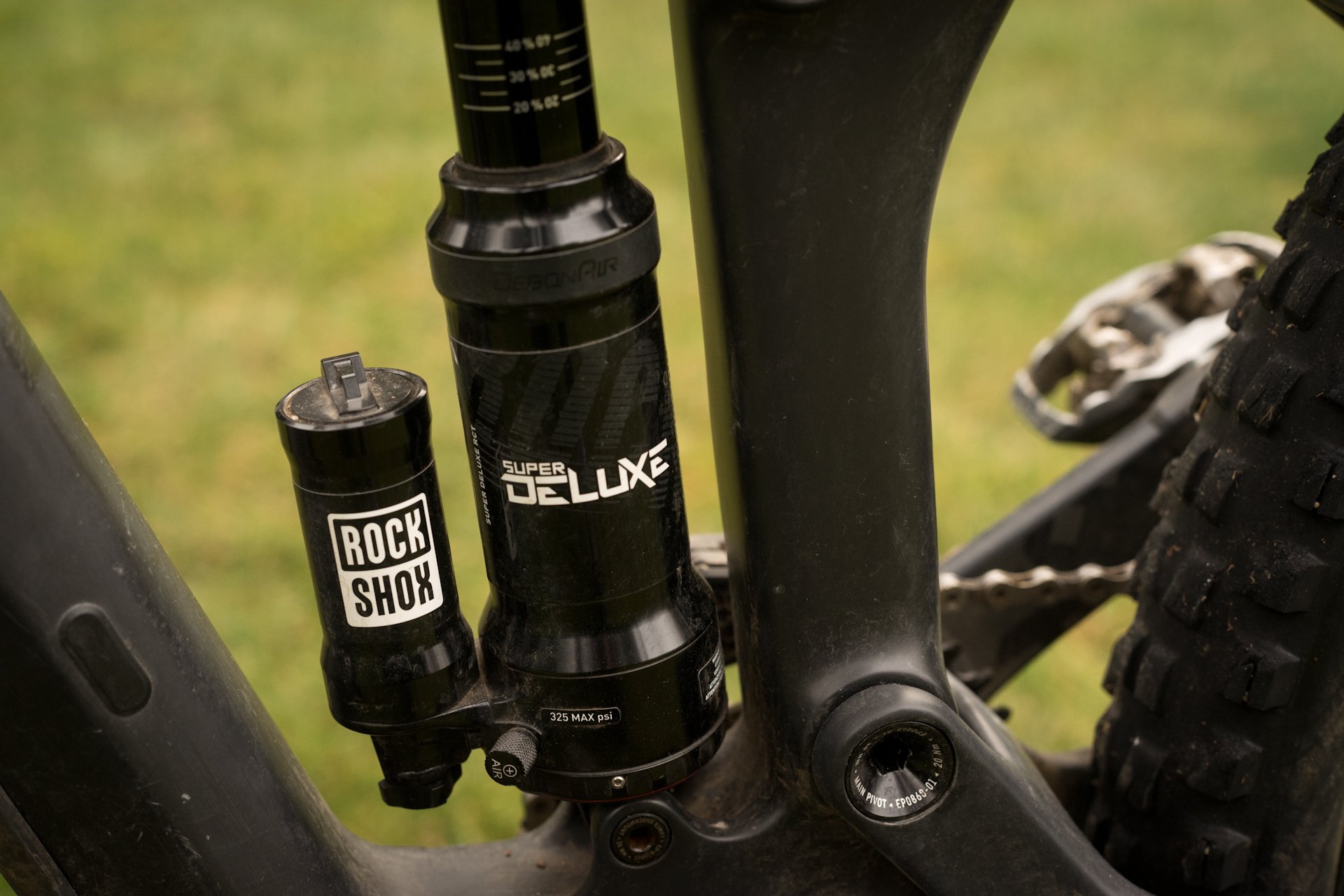
RockShox Super Deluxe RCT shock at the rear, set to 145 PSI.
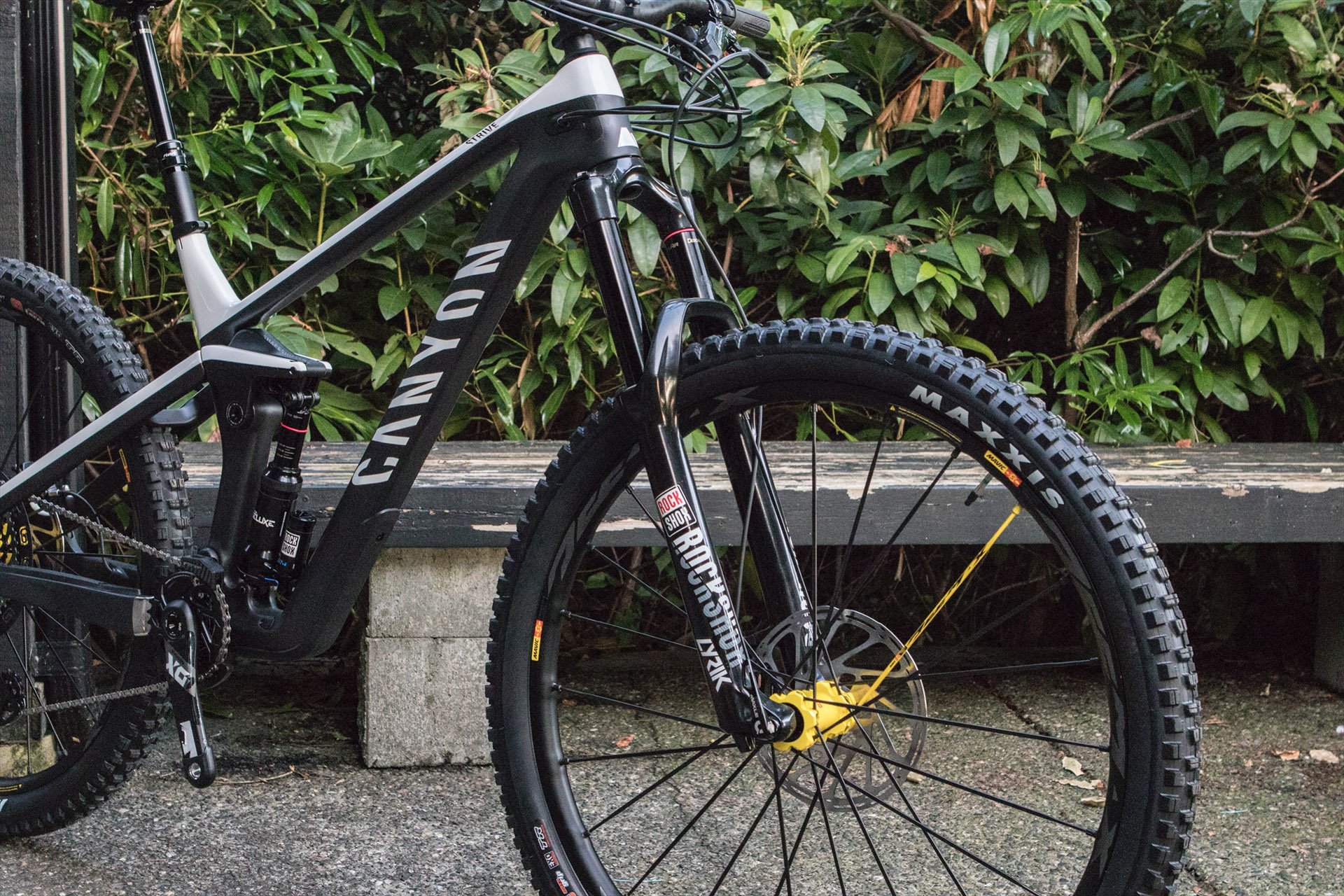
170mm RockShox Lyrik RC2 fork with 96 PSI.
I took out all the stem spacers except one to get the handlebar nice and low for two reasons. Number one is that coming off a 27.5 bike the front end simply felt really high. Number two is that I had a very fast friend recently explain to me that with the extra stability that the new breed of long wheelbase, long reach Enduro/trail bikes have, you no longer need a high front end on the steeps. So low for everything is the way to go.
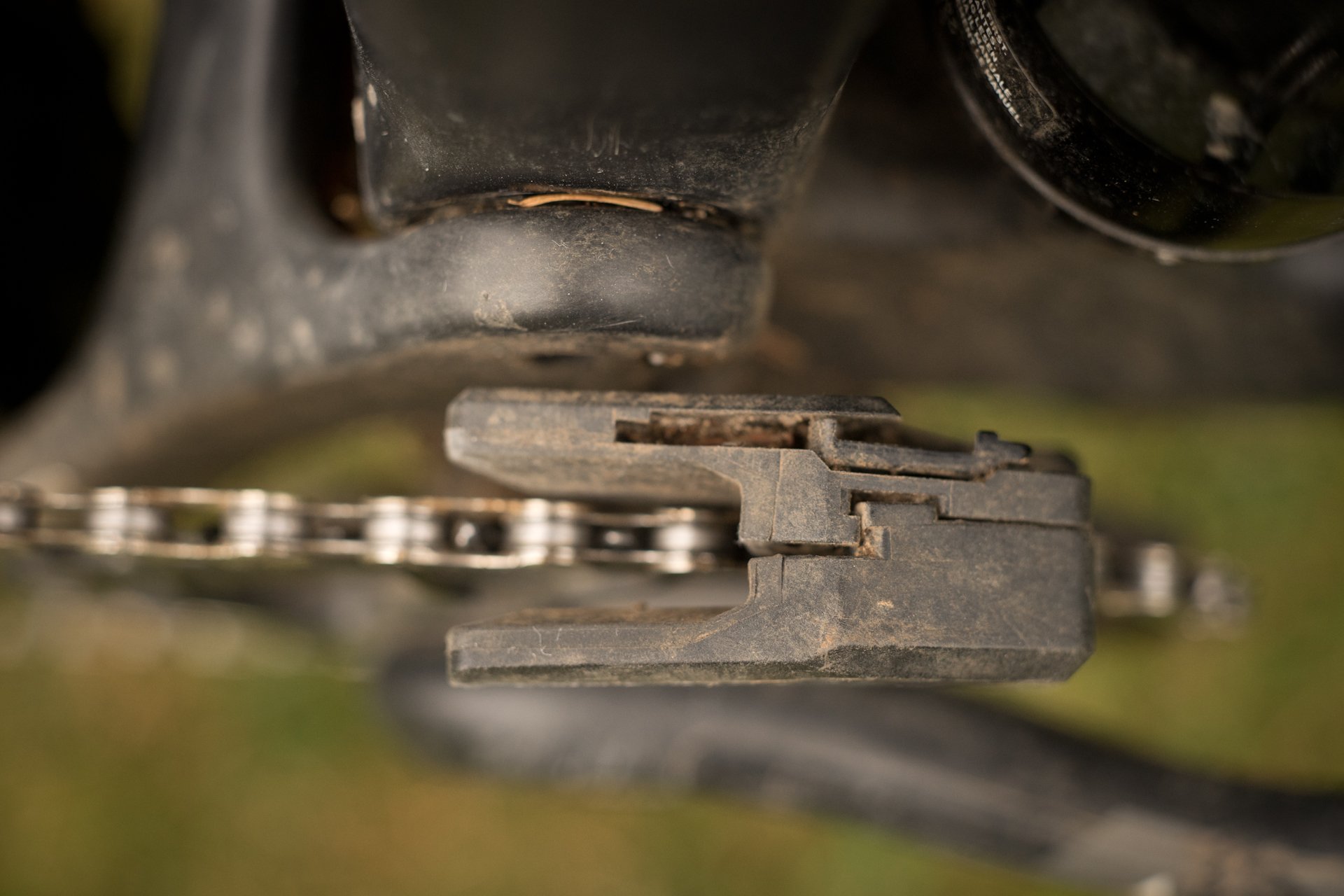
E13 TRS SL chainguide didn't fail exactly...
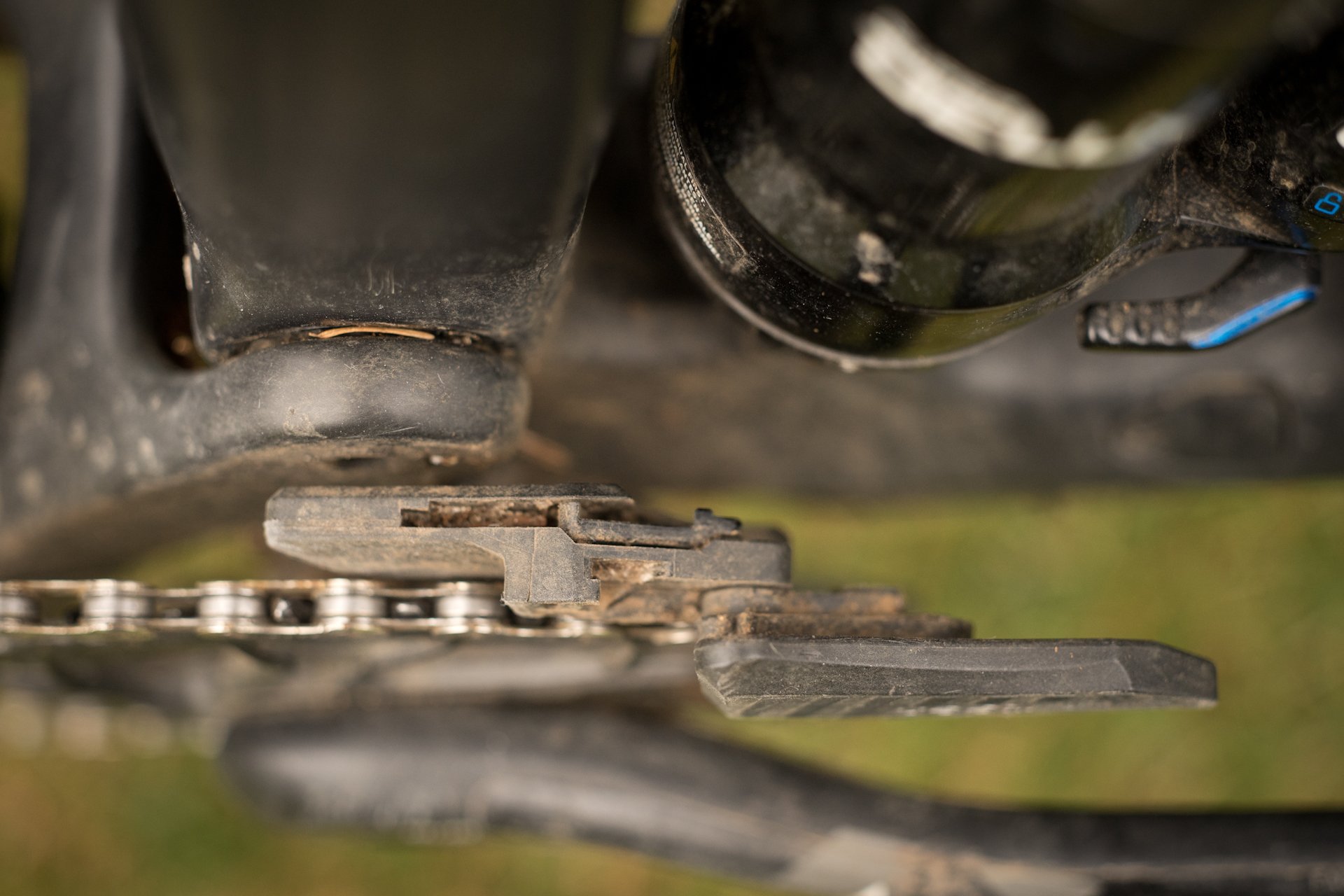
But it wouldn't stay closed after a time.
Riding the Goods:
A few details were noticeable right away. It was great to have the 165mm cranks right out of the box. Combined with the Shapeshifter climb mode I rarely smashed pedals even with the low BB height.
The EXO rear tire did not last long. Shuttling a rocky steep trail up near Kamloops the sidewall was slashed open on the first lap. I cursed the German decision to spec the EXO as I stuffed in a tube while getting eaten by swallow sized BC interior mosquitos. For the rest of the test I ran a DH casing Minion DHF on the rear. It rolled noticeably slower but resulted in trouble free bike riding.
The other piece of componentry not to last long was the tool-free top guide on the E13 TRS SL chainguide. With mud and grime and hard use the top guide would not stay closed.
I learned to love the very cool Canyon Quixel thru axle with the hideaway integrated lever. It made pulling the rear wheel off a very speedy operation. I often would just pull out the lever whenever hanging about just to show it off.
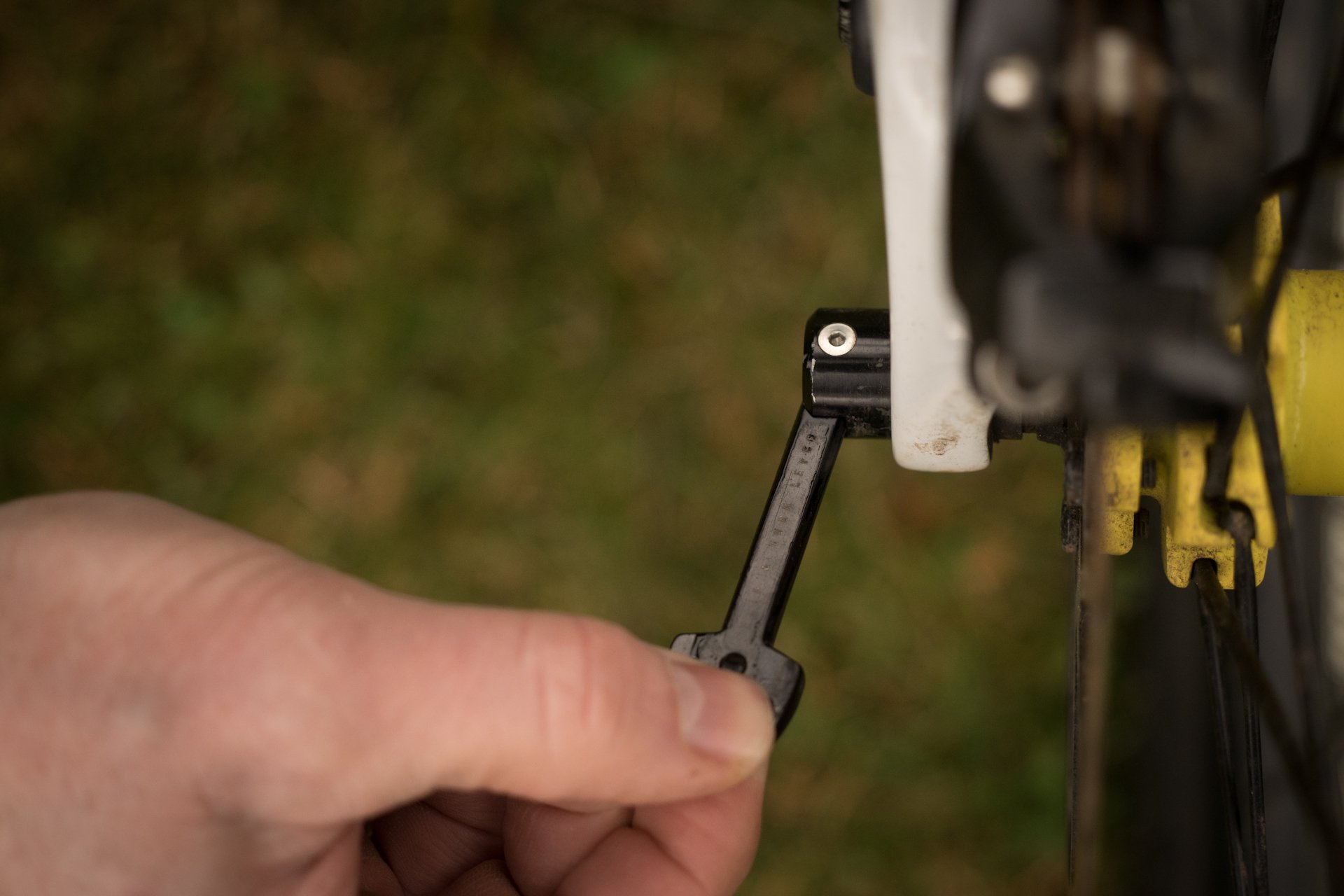
Canyon's Quixel thru axle was a hit.
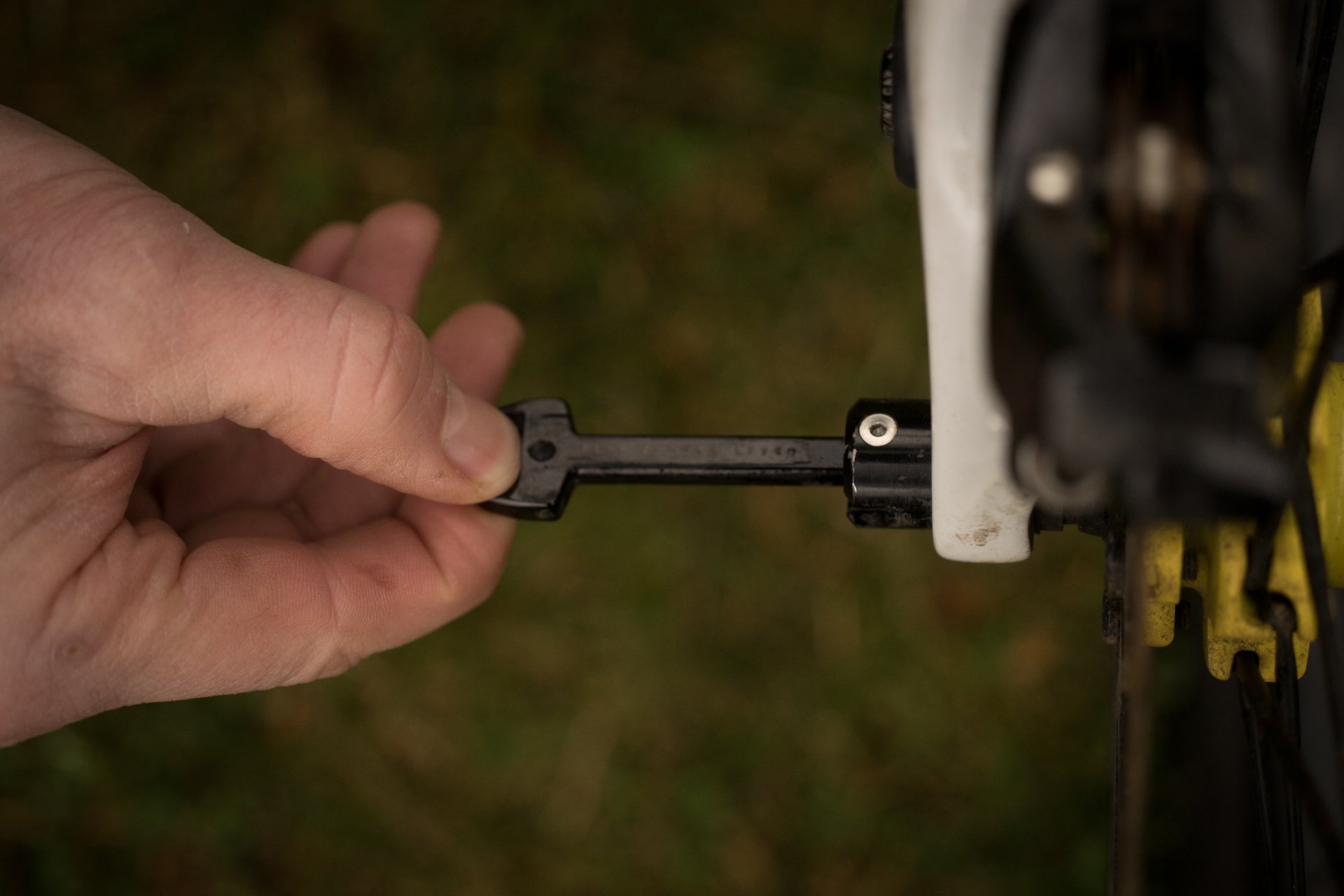
It's well hidden and secure.
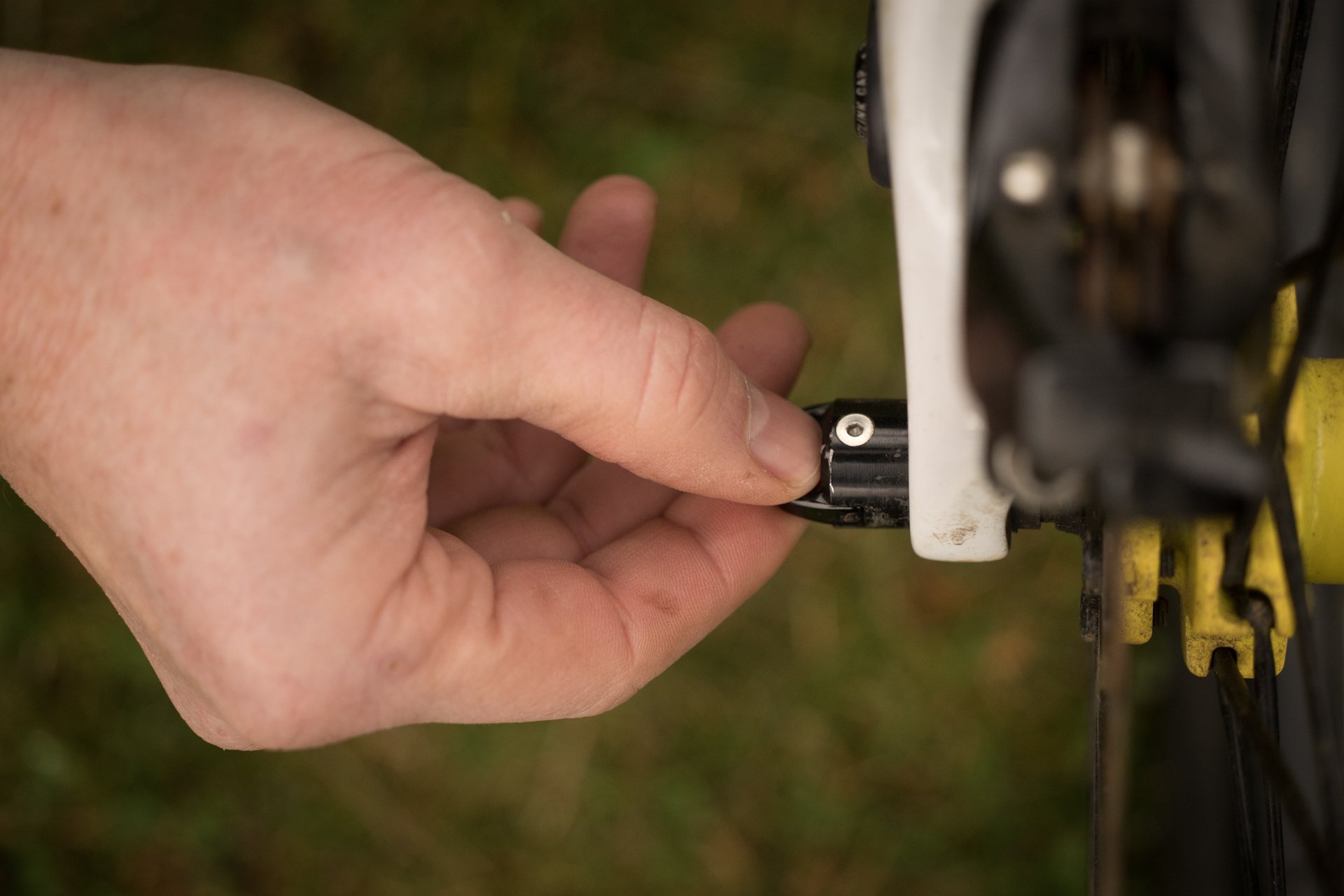
And yet easily deployed for a quick rear wheel removal.
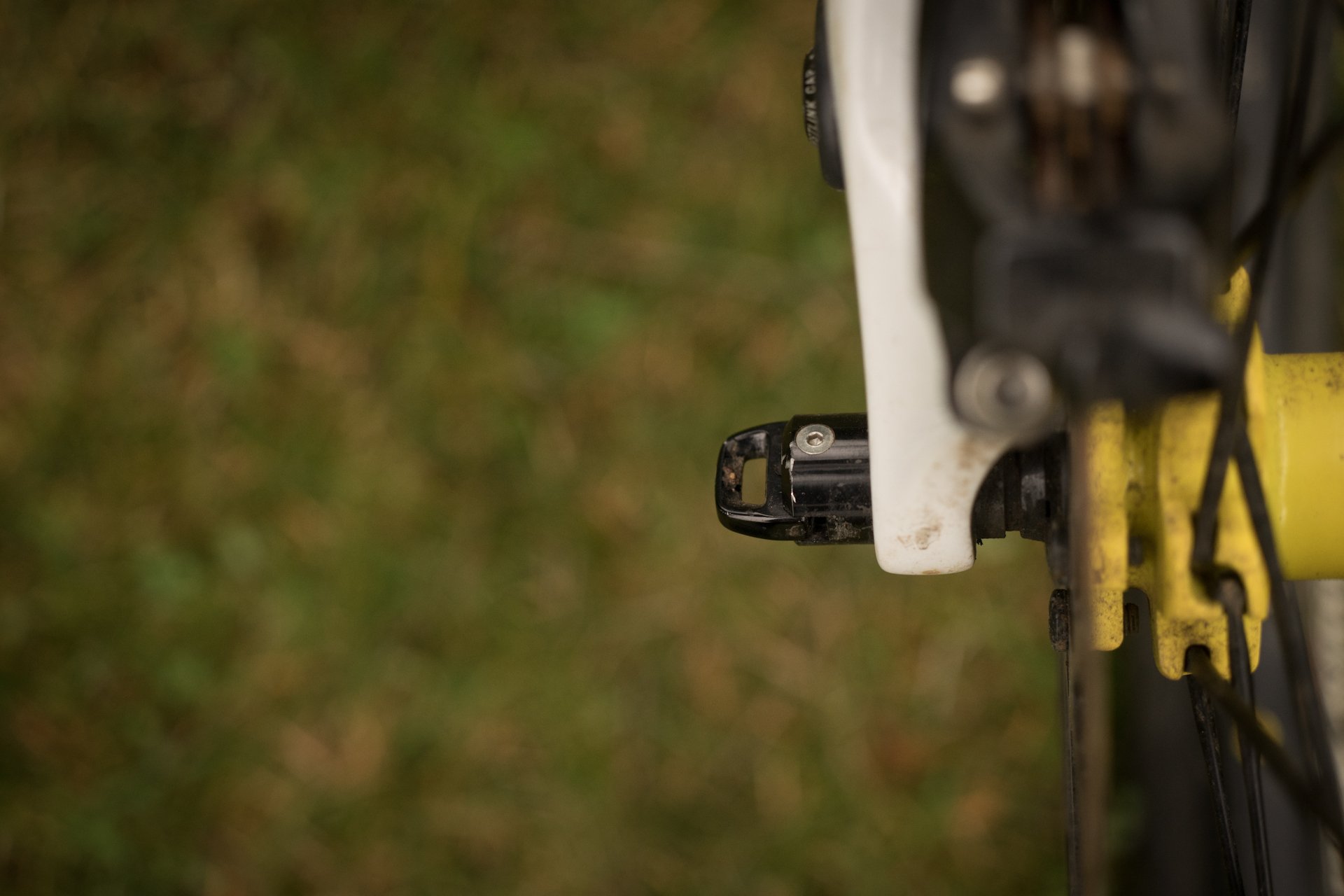
Stowed.
This bike can be ridden very hard. When set up firm the platform is incredibly stable. However it is not a plow. This bike likes to be ridden high in its travel and as a result feels very light and poppy. I always meant to soften the suspension when riding some of the slower North Shore jankage but I couldn't bring myself to do it. The light mobile feel combined with the ability to dive fearlessly into G-out situations and flat landings was very addictive. I am not a top level Enduro rider but I would guess that for some of them the feel of this bike would translate into confidence, the ability to pedal hard when needed and ultimately speed. In some cases you could argue that the ride was not plush when the trails were rough and slow (like BC’s trial in Whistler Bike Park) however to me the trade off for everything else was well worth it. I have been riding the latest generation version of the Santa Cruz Hightower recently as well. Although it's not a direct comparison (see above chart comparing travel and geometry), switching back and forth really highlighted how capable the Strive is. The long leggedness of the Strive and the stable platform is really noticeable and very appreciated whenever the hits get bigger and the pucker factor is increased.
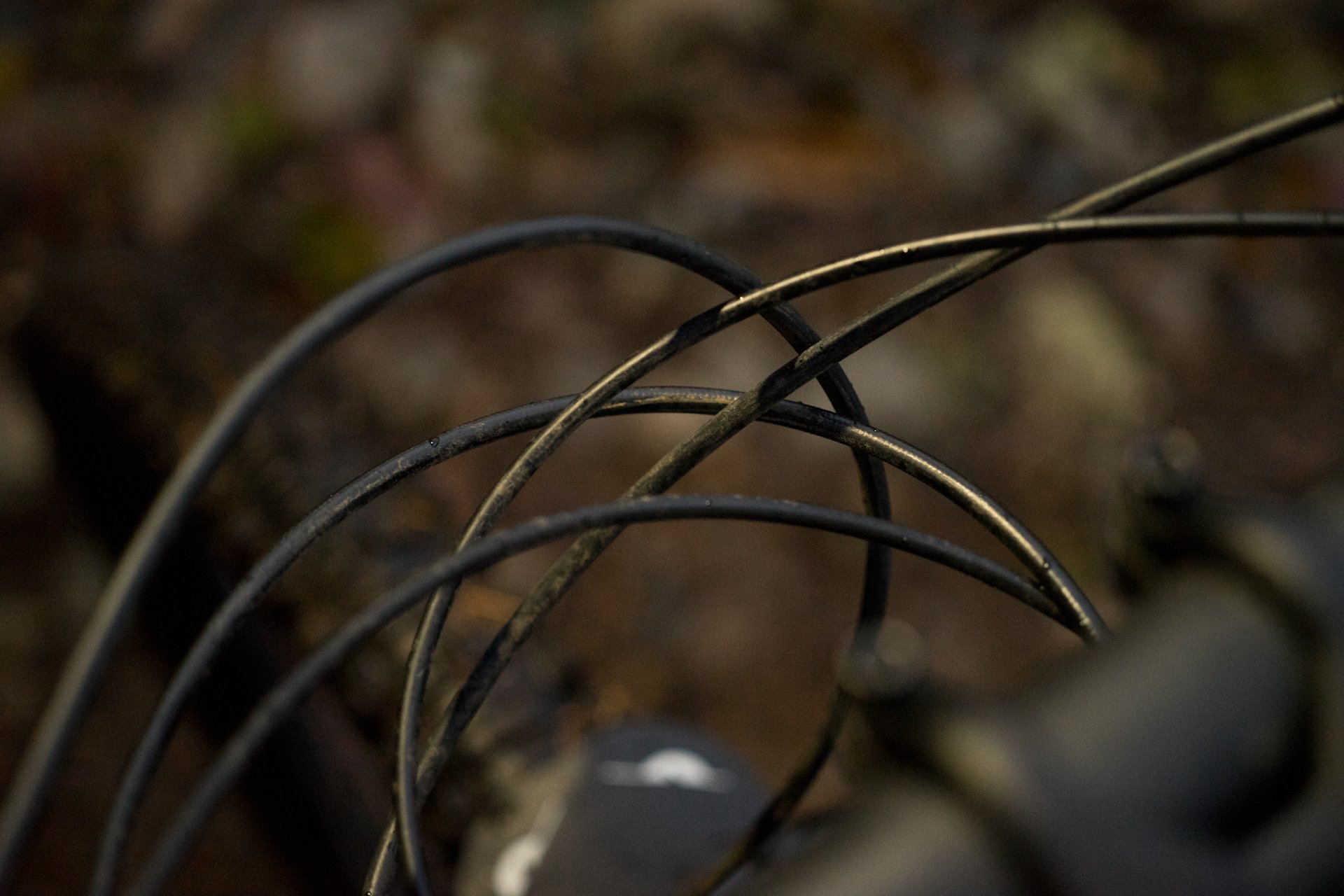
The Shapeshifter brings cables and lines up to five.
The Shapeshifter worked well for many months. However right at the end of the test period the air cylinder blew with the end result being that the piston would extend and then slam closed under compression making the bike unusable. The good news was that the unit is made by Fox and the local Suspension Service center (after a little head scratching as it was the first one the Canadian Service center had seen) was able to repair it. Fox reported that the failure was caused by a tear in the main seal. Removing and reinstalling the Shapeshifter is no easy task. It involves removing 3 of the pivots and pressing out the top shock hardware which mounts both the shock and one end of the Shapeshifter. The Shapeshifter is cable actuated similar to a lot of seatposts these days. Otherwise, my biggest complaint with the Shapershifter was not a huge deal and sounds a bit like whining, but when you are climbing and pull up to the start of a nasty slab downhill section you have to remember to engage the downhill mode and then you need a few feet of trail to bounce the bike a few times to compress the piston to get the bike ‘slack’ again. If you forget to engage it before you start heading, down then you are diving in climb mode regardless of your intentions.
Using the Shapeshifter was not a game changer for me. I suppose if I was doing much longer gruelling climbs than found around these parts I might feel differently. The climbing prowess difference between the climb and descend modes was not hugely obvious. Eventually I started to often forget to engage climb mode for climbing. However when switching bikes over to the 2020 Hightower the seat angle of almost 77 deg (compared to the Strive’s 75 deg in the steep position) was readily obvious and appreciated. Where I liked and used the Shapeshifter was when riding relatively flat and tight trails. The sharper steering and punchier feel was noticeable. In the end though, if I was laying out my own cash I would prefer not to have the added complexity of the extra ‘shock’. The bike is easily in the great bike category without the Shapeshifter.
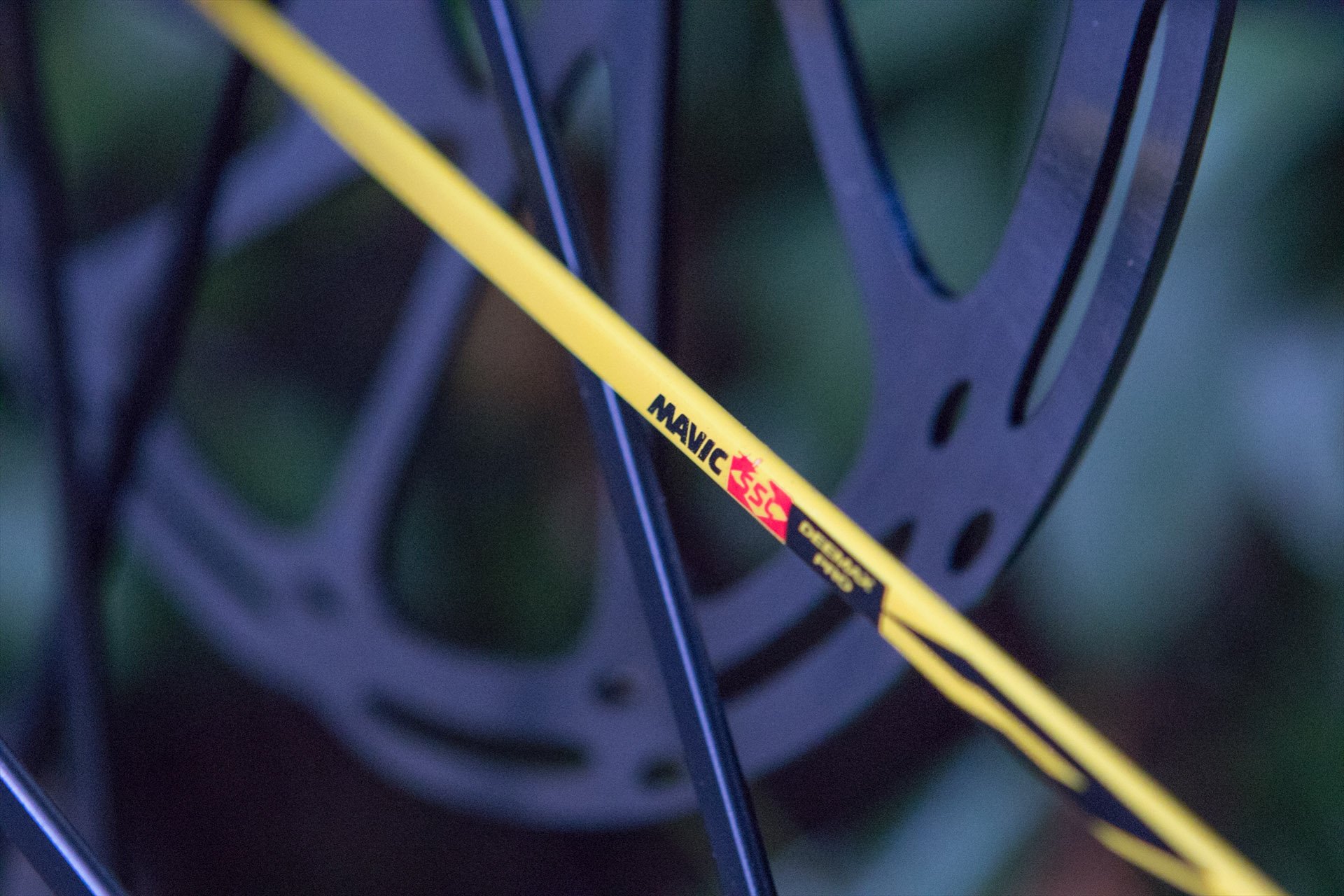
Whatever you do, don't break the yellow spoke.
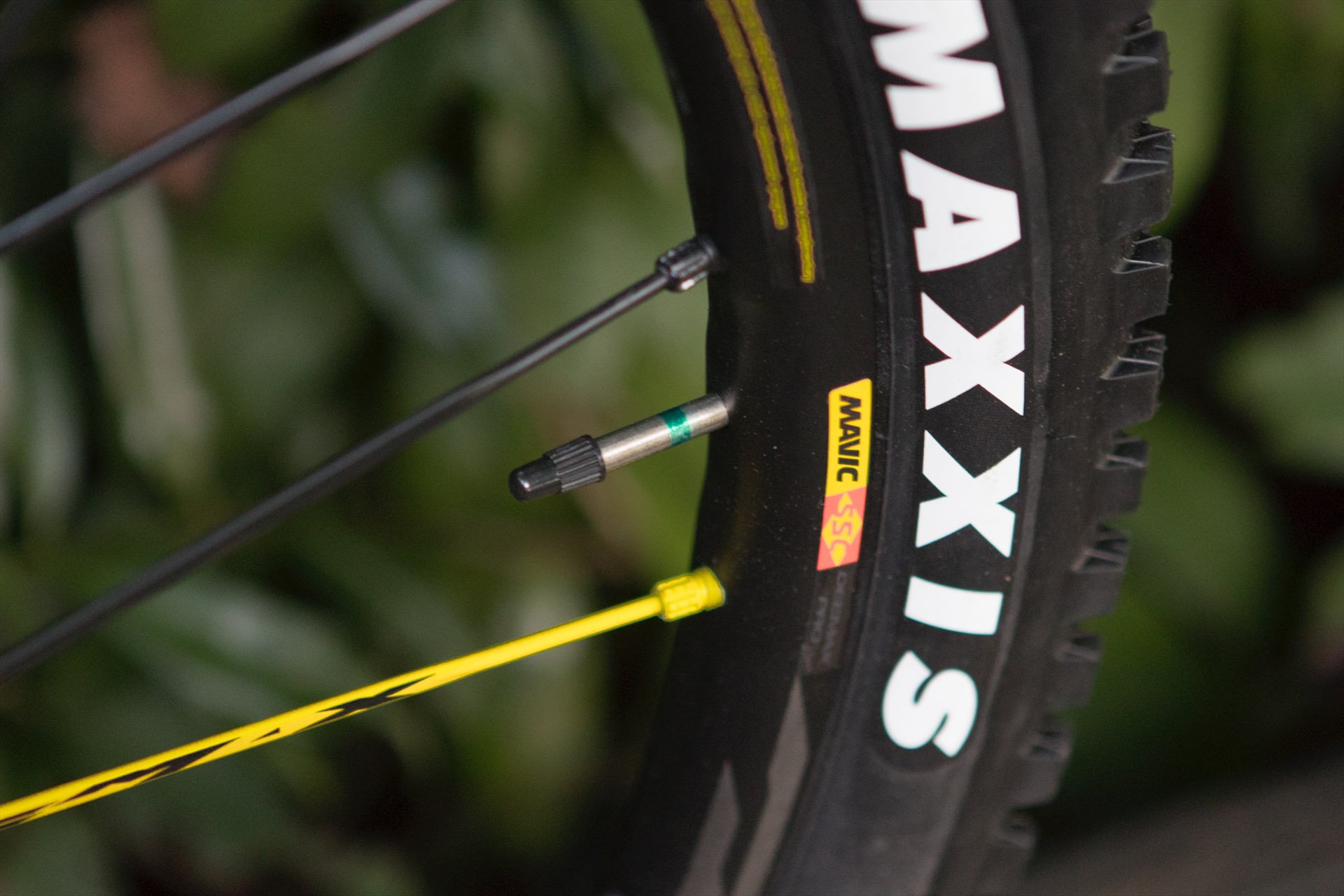
If you order a Strive with the Mavic Deemax Pro aluminum wheelset, you might want to pick up some spare spokes before heading out on a trip. For the current model year the Strive 9.0 comes with a Reynolds carbon wheelset with conventional J-bend spokes.
The Mavic Deemax Pro aluminum wheelset was fantastic for the first few months. They stayed true even when bashed about the Whistler bike park. For quite a while I was bragging these aluminum rims were uncannily strong like a good set of carbon rims. However this winter when I started lowering air pressure in an effort to find that last little bit of traction I broke spokes in both the front and rear wheels. Broken spokes is not normally a big deal and it happens even with a good set of carbon rims. The problem was trying to buy replacement Mavic Zicral spokes. The first North Vancouver shop I went to told me I needed to order a set of 12 at $80. There are two different lengths so this would have been $160 to fix two spokes. Eventually I found out that another North Van bike shop (Obsession Bikes) works with Mavic and I was able to order and buy individual spokes. The aluminum rims are a good match for the bike considering I had it set up quite stiff. The high radial stiffness found in a few of the carbon brands out there would not have been welcomed. The criticism of proprietary spoke systems still rings very true however.
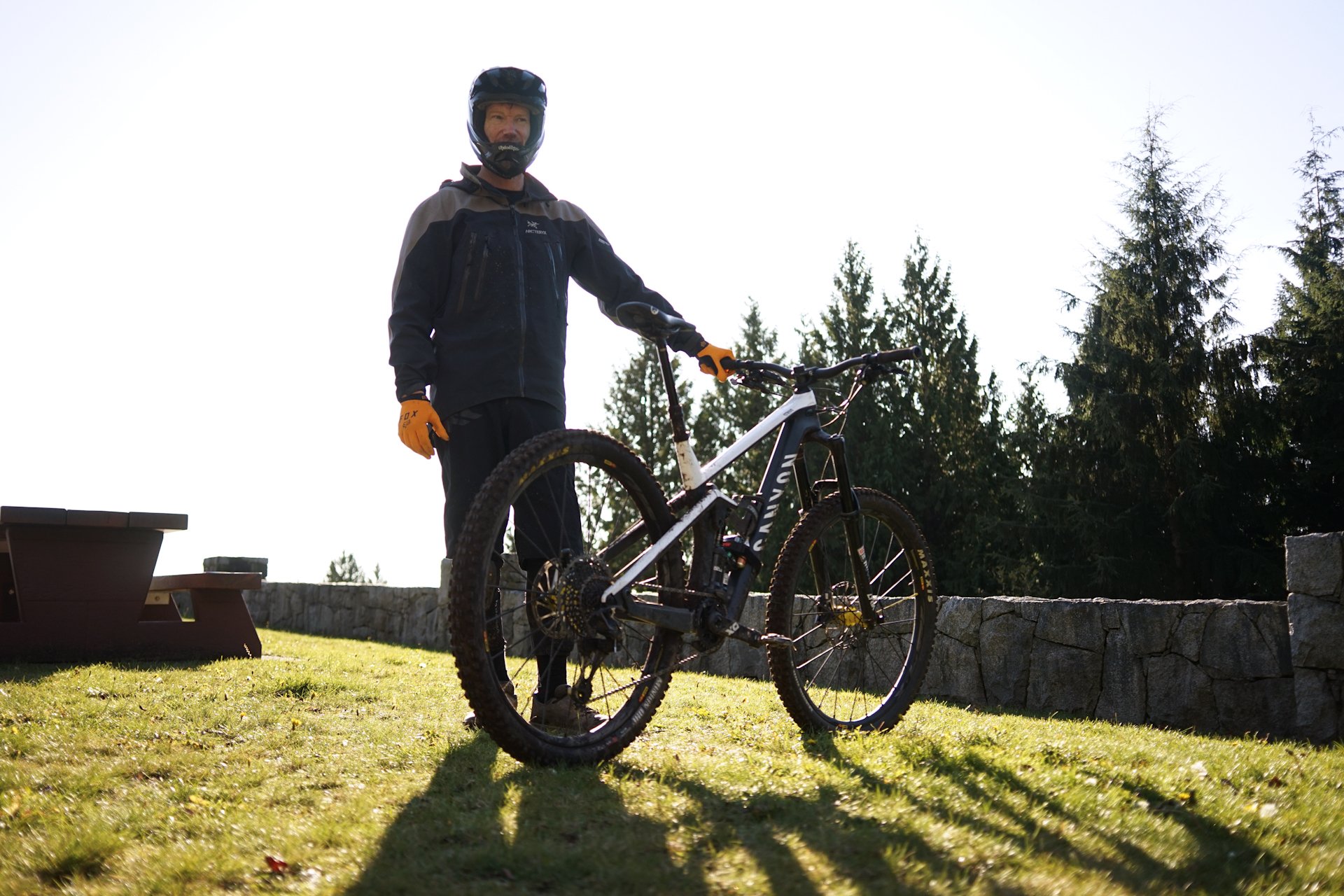
Overall Goodness
The 2019 Canyon Strive CFR 9.0 Team is a very high quality bicycle. Attention to detail is very good as is quality of finish. The bike feels light and maneuverable and can be hammered into big hit situations with full confidence. On paper the wheelbase, reach and seat tube angle are arguably too conservative. The component spec is very high end with absolutely no deal breaking weaknesses. The Shapeshifter works fine and as advertised but is unnecessary in this testers opinion. I would rather have a cleaner cockpit, even lighter weight and one less air piston to worry about.
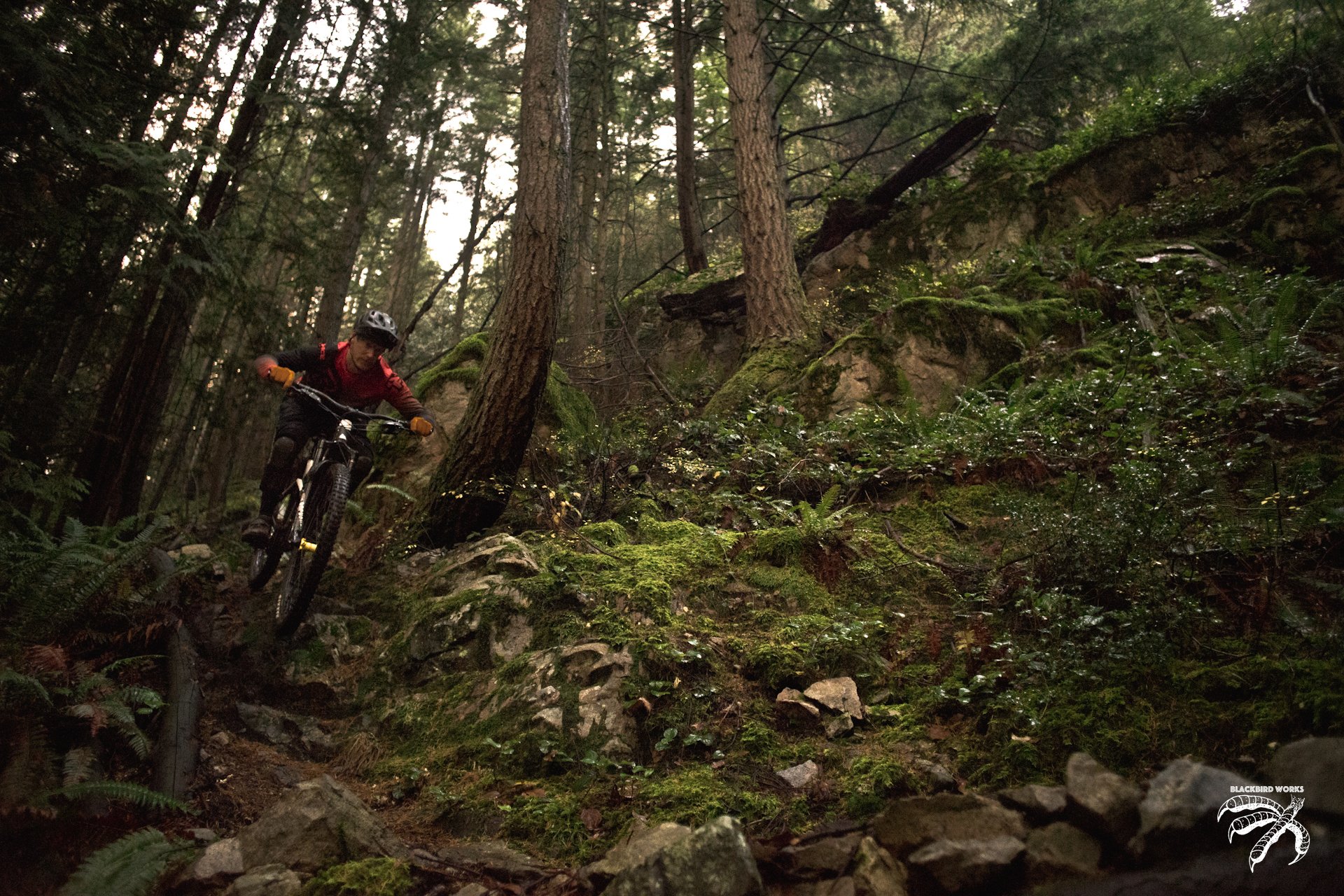
Diving confidently onto a rocky ledge.
In North America Canyon sells their bikes direct to US consumers out of Carlsbad, Ca. No love for Canada just yet - but the rumours persist. Canada was supposed to launch at Sea Otter Canada last July, but that's been delayed. When we know you'l know. You can go to Carlsbad California if you want to test ride a bike though or simply to check out their really good looking showroom.
The current model of the Strive CFR 9.0 29 sells for 4999 USD, with the same frame you see above, and it's a hell of a lot of bike for the money. Check it out here...
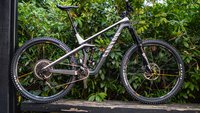
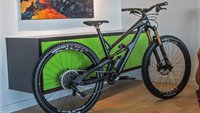
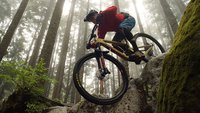
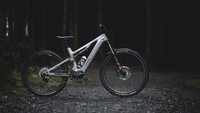







Comments
Kos
4 years ago
Great, honest review. New and improved Shapeshifter thingy for this year, right?
Reply
Angu58
4 years ago
I am disappointed with Canyon. Anyone remember their Crankworx tent last year? When they announced they would be shipping to Canada by November of 2019? Crickets since the.
Reply
Pete Roggeman
4 years ago
I can understand your disappointment, but they didn't ever officially announce that they were coming to Canada. The rumours flew and it seemed inevitable, but it just hasn't happened yet.
Reply
Angu58
4 years ago
https://cyclingmagazine.ca/mtb/gear-patrol-new-bikes-custom-colours-and-shimano-12-speed-options-from-whistler/
First article talks about the custom painted strive to commemorate them shipping here.
Reply
WestCoastCanuck
3 years, 11 months ago
They may have made a sweet custom painted bike but I still don’t believe that they ship here... Please let me know if I’m wrong because I do like a few of their rides!!!
I do find it interesting that Mark Wallace rides for them and we can’t even buy them here!
Reply
DMVancouver
4 years ago
Interesting thoughts on bar height with the new long and slack bikes. My experience has been the opposite - higher bars feel better to me. The longer reach positions you over the front of the bike by default, and higher bars are necessary to have some ability to shift weight around.
Reply
DMVancouver
4 years ago
But I also note that the 464 mm reach on the large is on the conservative side, so the bike might play well with lower bars since you're not that stretched out.
Reply
Kenny
4 years ago
I think that could be the case. I'm 511 with a long torso and my last 3 bikes have had 475-480mm of reach, and it almost seems no stack height is too high.
I recently got a size large chameleon for playing around, 458mm reach. High stack felt awful. Since reach shrinks as you add stack height it makes sense I guess but I was surprised still, for some reason.
I'm not sure if my high stack bikes are compensating for bike with too much reach for me, or my my low stack bike is now compensating for a reach that's too short, or both, or neither, be it seems to be a thing.
Reply
Mike Wallace
3 years, 11 months ago
Yes. The Canyon Factory DH Team has a large Canadian presence. Mark Wallace and the new junior Jakob Jewett. Also Magnus Manson last year. Not to mention team manager Gabe Fox. All BC guys. The other riders are Aussie. Kye Ahern and Troy Brosnon. I wonder if you can buy a Canyon in Australia?
Reply
Please log in to leave a comment.